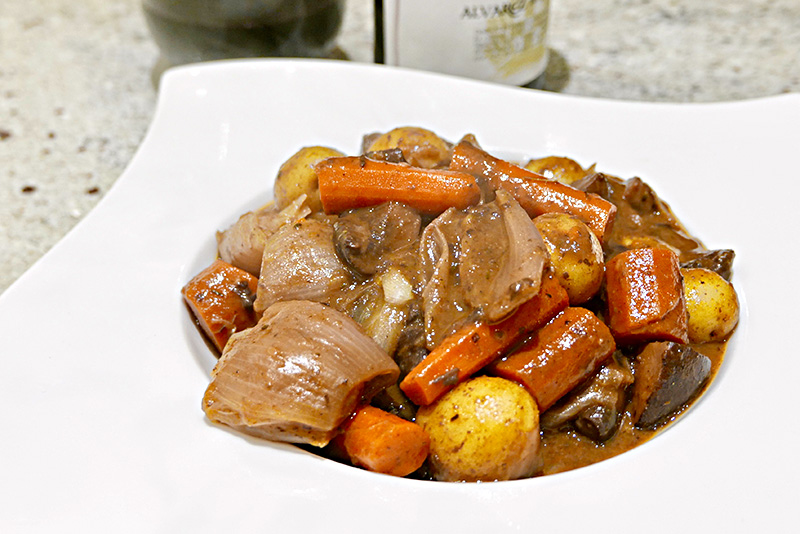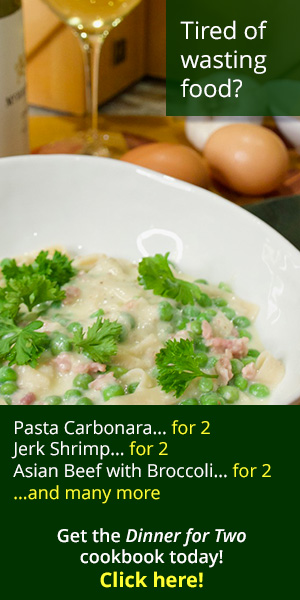Mushroom Bourguignon
Servings
4Serving size
about 2 cupsThis recipe can be multiplied, but you’ll need a big pot. It can also be divided by 2. Like a lot of soups, leftovers are better than fresh.

Ingredients
| 2 1/2 lb Crimini mushrooms |
| 4 tsp. Olive oil (divided) |
| 30 pearl onion White or yellow onions (peeled) |
| 16 ounces Carrots, raw (peeled and cut into large chunks) |
| 1 pound Yukon gold potatoes (choose small potatoes) |
| 1/2 leaf Bay leaves |
| 1 Tbsp., leaves Dried thyme |
| 2 Tbsp. No salt added tomato paste |
| 4 tsp.. Unsalted butter (softened) |
| 4 Tbsp. All purpose flour or garbanzo flour |
| 1/2 tsp. Salt |
| 1/4 tsp., ground Black pepper |
Instructions
Remove the stems from the mushrooms and place them in the skillet with 2 teaspoons of the olive oil.
Roast for about 25 to 30 minutes.
While the stems are roasting, cut the mushroom caps in quarters and set aside.
Remove the skillet from the oven and add 2 cups of water to the pan.
After the water is cool, puree the mushrooms and water until smooth.
Pour the mushroom broth through a fine mesh sieve, then use a rubber spatula to force the smaller mushroom bits through the mesh. Set aside.
Place a large stock pot over high heat.
Add 2 teaspoons of olive oil and the mushroom caps.
Cook for about 5 to 8 minutes, stir frequently so they brown on all sides.
Add 1/2 cup water, the mushroom broth, wine, onions, carrots, potatoes, bay leaf, thyme, and tomato paste to the pot.
Stir, cover, and reduce the heat so that the stew is simmering.
Simmer for 50 minutes.
Make buerre manie by placing the softened butter and flour in a small bowl. Blend together until smooth.
Push the solid contents of the stew to one side of the pot so that there is an area of (mostly) sauce.
Add the buerre manie to the liquid sauce area of the pot slowly, stirring continuously. If added too fast, the flour will form clumps.
Once the sauce thickens, fold the whole stew together, distributing the thickened sauce, and the stew is ready to serve.

Would you like to print or download the document?
Special Diet Information
Click on the icon for information.










Lactose
This recipe is safe for those who are lactose intolerant.Recipe Notes
Boeuf Bourguignon is one of my all time favorite recipes. It is also one of the first recipes I learned to cook – now about 50 years ago. I love this version just as much as the original, if not more. The great thing about burgundy beef and stews in general is they are generally umami rich. My wife and I call these types of meals “brown food”: they might not be colorful, but they’re replete with unctuous, savory, comforting flavor and rich textures.
I originally thought I might start this recipe with dried mushrooms and make the mushroom broth by steeping the dried mushrooms in water, but roasting the stems works great and makes the recipe cheaper (plus dried mushrooms can be hard to find). It is an extra step, but it’s worth it in terms of ramping up the flavor.



